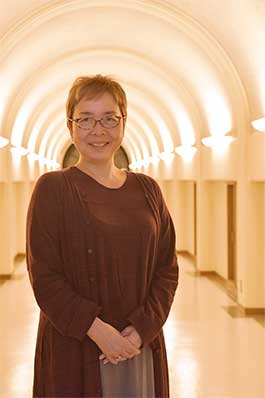Message from the University President

Rui KOHIYAMA
President
Ferris University
What made Ferris a pioneer of “modern girls’ education”?
First, its insistence on monogamy based on Christianity. In Japan until early modern times, polygamy was a natural practice if it was economically viable. The school began to educate women to bravely challenge this practice. The school claimed from the very beginning that women should be respected because they are equal to men, and that women’s sexuality was not something to be used by men, but something that women themselves should control. Out of such education, there came women with a sense of self and their own will.
Second, the school nurtured the mindset that became the basis for Ferris’ current motto, “For Others.” Even in early modern Japan, there was concern for others. However, it was a kind of “give and take’’ within the scope of human relationships that were directly related to oneself, such as “favor’’ and “obligation’’(in Japanese: on and giri) What the missionaries at Ferris taught their students was how to concern themselves with things outside of these direct human relationships, and thus expand their imagination to take an interest in people whom they had never met and whose names they did not even know.
Third, new skills were taught: knowledge of English, Western music, world geography and history; writing Japanese freely in the vernacular to facilitate translation; knitting, dressmaking, and providing innocent entertainment that did not involve drinking or sexual play.
Although some of the skills above have already become commonplace, others are not. While updating the skills we need to pass on, we will continue to educate women who value themselves, have their own will and opinions, have a rich imagination for others, and bring brightness and fun to those around them.



